How to Create a Buyer-Centric Outbound Sales Strategy for Higher Conversions
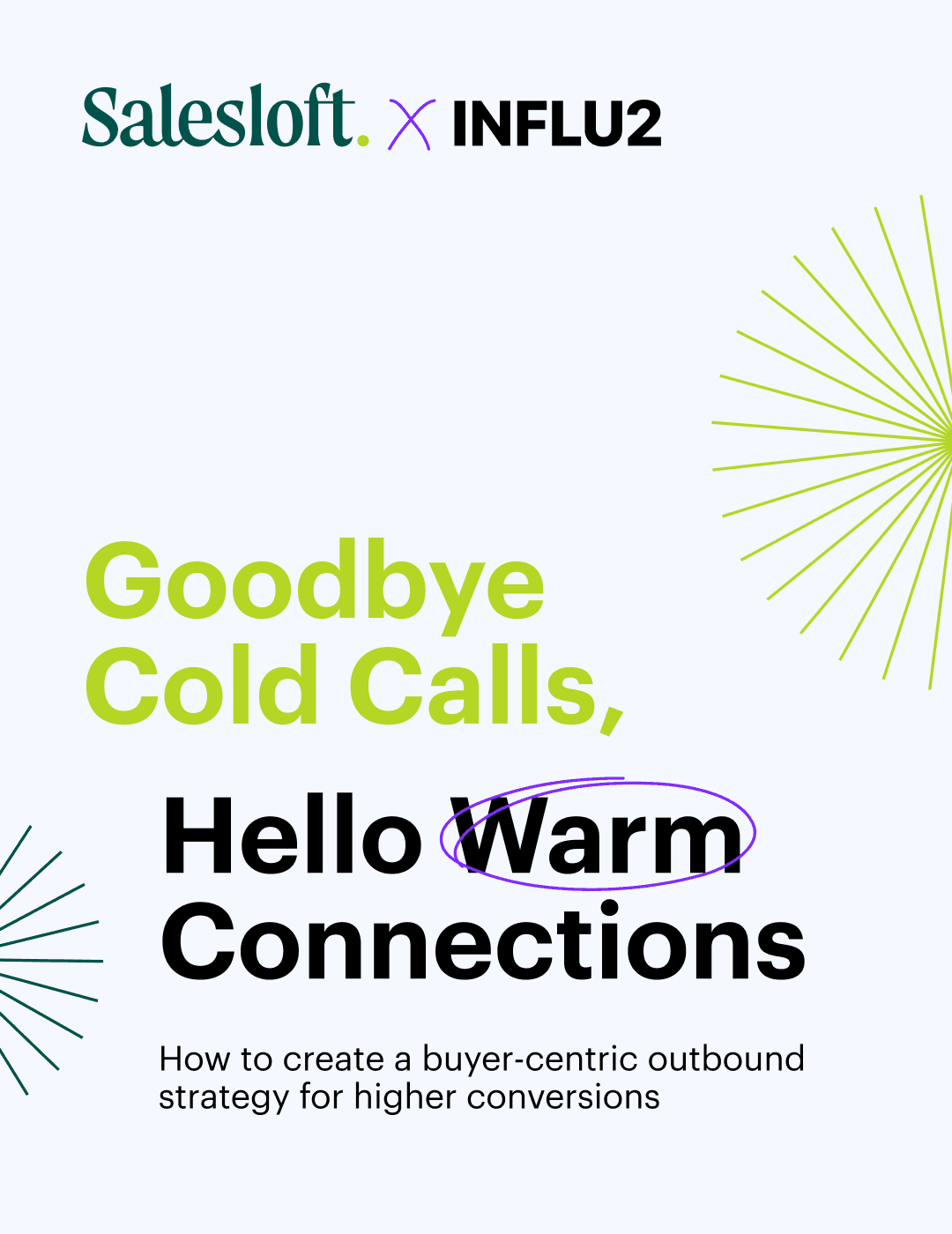
RepVue recently released a very telling report about the state of sales for SaaS companies. According to their data, the percentage of salespeople who hit their quota dropped from 53% in Q1 2022 to 42.7% in Q2 2024.
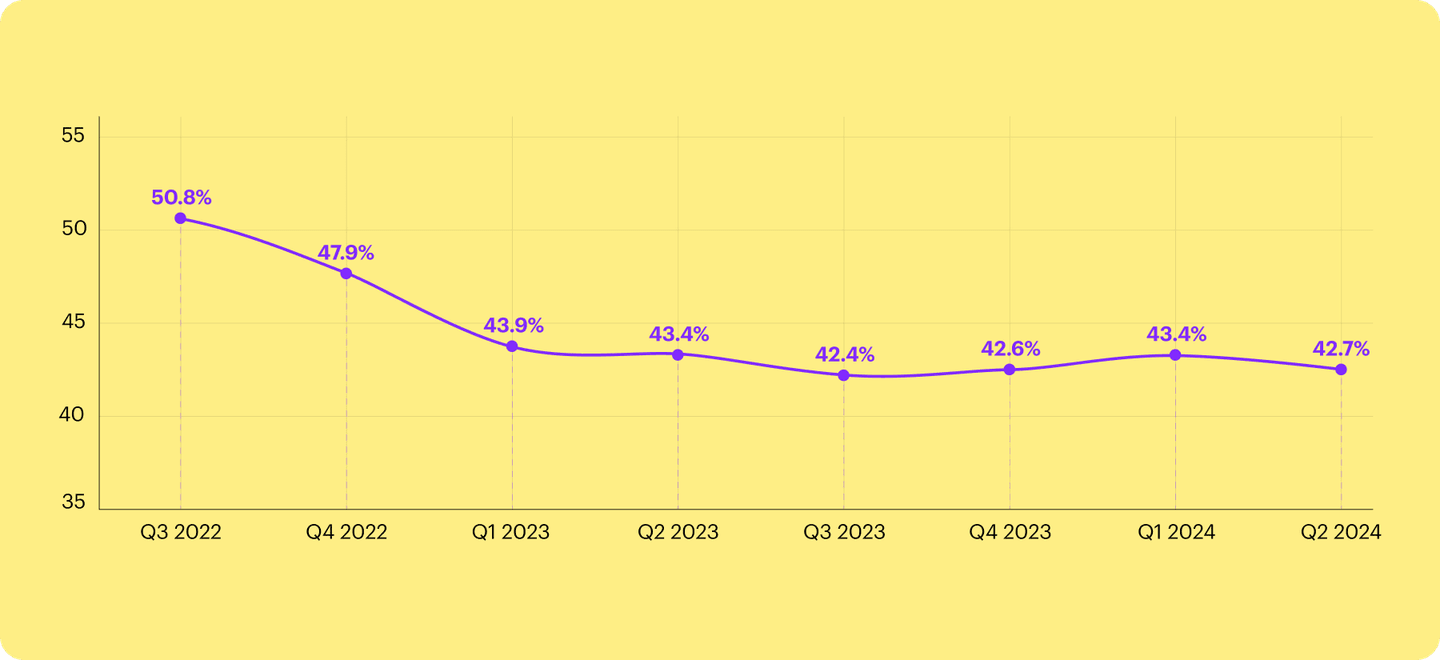
The downward trend is a result of several factors, including lower budgets, less demand and GTM teams being overcapacity according to RepVue.
Whatever the case, it’s clear that you can’t approach your outbound sales strategy the same way you did in the past when deals were easier to come by, and less difficult to convert.
So, how can you buck the trend?
We’ve teamed up with Salesloft to provide a blueprint for how to create an effective outbound sales strategy that uses all the resources at your disposal and aligns with how B2B buyers approach their purchasing decisions today.
Finding alignment with marketing
Alignment isn’t just a buzzword, it’s a proven strategy.
Gartner data shows that sales organizations that prioritize marketing alignment are 2.96x more likely to exceed customer acquisition targets.
If you’re part of the 90% of sales and marketing teams that know better alignment is the way to go, but aren’t quite sure how to achieve it, here’s how to get started.
Prioritize the same audience
The first step is kind of obvious in theory: you need to align with marketing on who to target.
However, marketing and sales teams don’t always have the same definition of what an ideal customer looks like if they’re using different criteria to define them.
The solution is partnering with marketing to create an ICP you both agree on. Three important data points you should build your ICP around are:
- What type of customers do we convert the best
- What type of customers have the highest retention rates
- What type of customers have the highest lifetime value (CLV)
Salesloft recommends considering criteria such as behavioral, firmographic, and technographic data.
Having clearly defined criteria based on data from Marketing, Sales, and even Customer Success will help you identify the types of customers that (a) get the most value from your product and (b) provide you with the most business value.
Leads and prospects from outside your ICP will inevitably come through occasionally. However, aligning on your target audience helps you prioritize the types of accounts you and your marketing team will proactively pursue.
Then, you can come up with other ways to handle prospects outside of your ICP. They can be placed into automated nurtures and cadences, or you could even consider creating a self-service flow for them.
The next step is aligning on which accounts you’re going after. This doesn’t have to mean just handing Marketing a list of company names. Consider meeting with them and going through a list of the accounts you’re prioritizing and why.
It’ll give Marketing context for what you consider a “good account” and help focus their strategy and budget on the highest priority accounts so there’s less of a grey area around who to target.
Defining an ICP and a list of accounts that you and Marketing agree on is a great start, but your audience targeting can go even further.
Your target accounts have hundreds or thousands of employees, but Gartner found that the typical B2B buying group consists of 6-10 decision-makers.
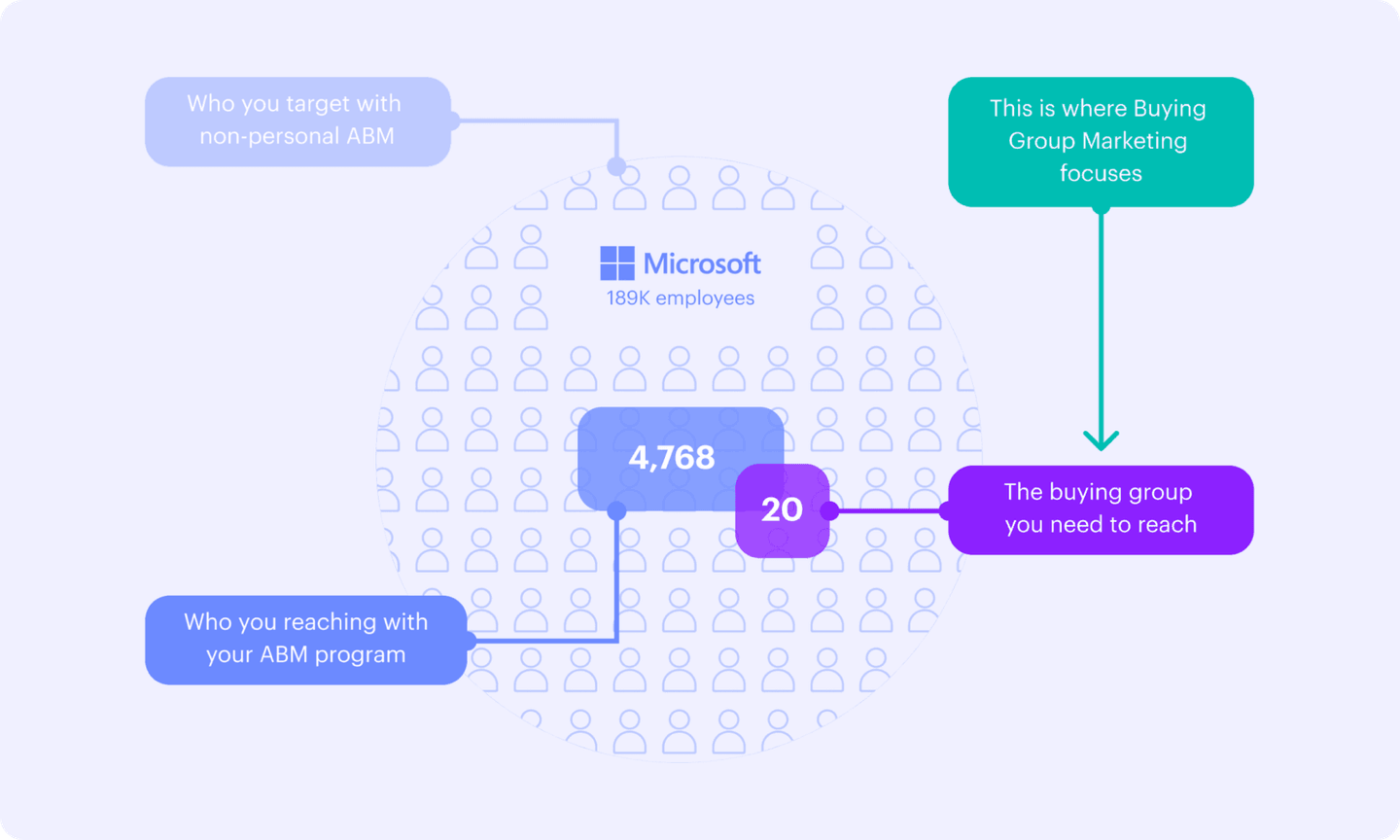
Going a step further and aligning with marketing on who those specific decision-makers and influencers are allows you to create a more strategic and concentrated effort to reach and convert them.
Audience alignment is a critical step in the process, so be proactive.
For instance, Influ2 customer StarTree wanted to make sure Marketing was only targeting people the sales team was actively trying to convert.
So they pulled contacts from high-priority accounts directly from Salesforce into Influ2, where the Marketing team built their ad programs.
Getting that alignment was the first step in their strategy that led to a 3.17x conversion rate boost in pipeline generation. Check out the full case study to learn what else they did.
Align on goals and metrics
If marketing is reporting success (say, driving MQLs) but your company isn’t hitting pipeline and revenue goals, there’s misalignment.
Both teams need to march towards the same goal.
That means moving away from purely isolated measurements—like marketing reporting on new leads generated and sales reporting on deals closed—and aligning on success metrics that focus on pipeline and revenue.
Misaligned goals often arise when the buying process is looked at as a series of separate conversion points where Sales and Marketing work independently of each other.
The traditional funnel model illustrates why this is a problem.
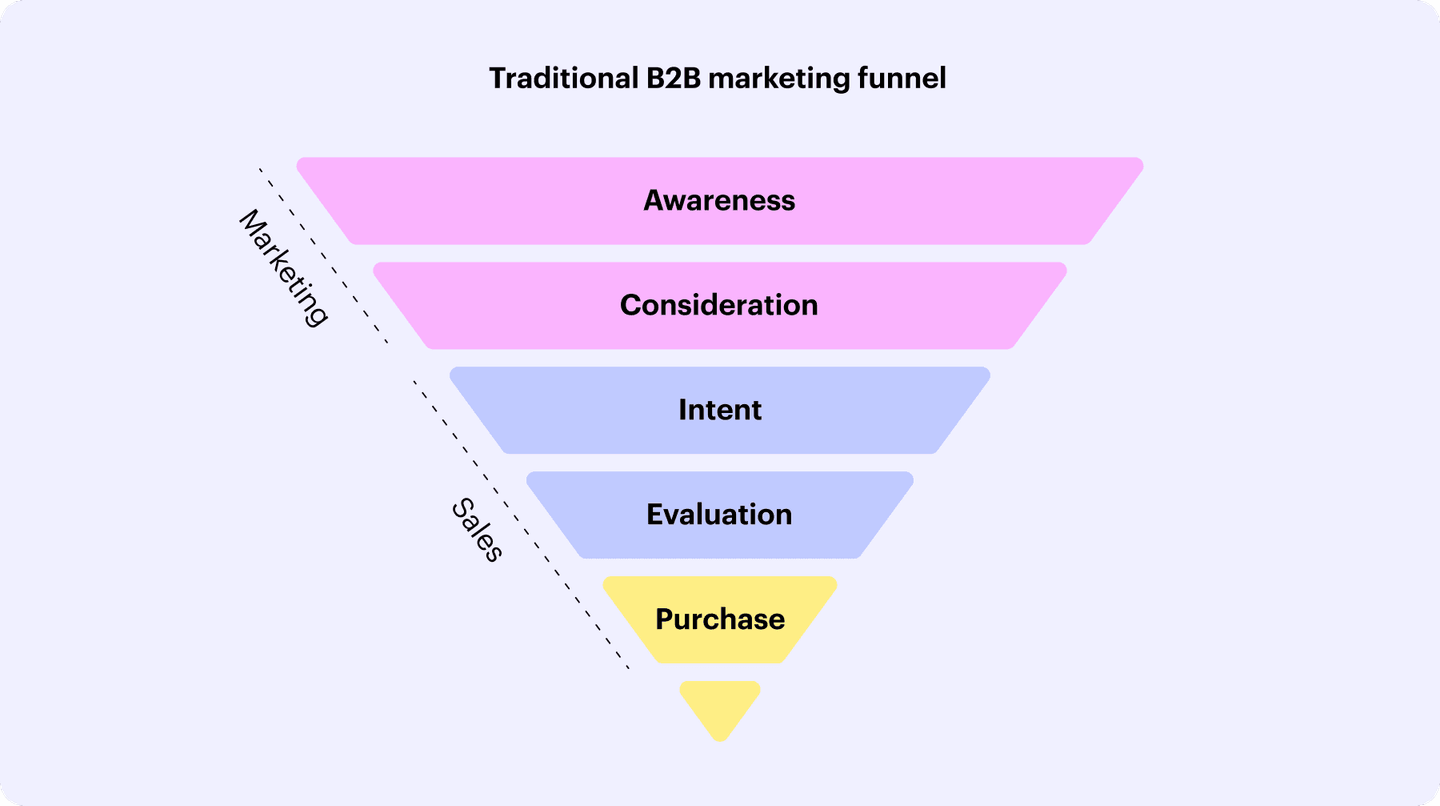
When Marketing’s success is measured by how many people they can bring into the funnel, but Sales is measured by how well they convert people that come out the other end, your goals aren’t aligned.
This results in a common scenario where marketing feels “we’re providing leads, but Sales isn’t converting them,” and Sales feels, “Marketing isn’t providing enough quality leads, so it’s difficult to convert them.”
Another culprit for the problem is attribution models that aim to assign “credit” for conversion points rather than look at the totality of what influences prospects to buy.
To solve this, align with Marketing on the entire buying journey rather than stages of a funnel.
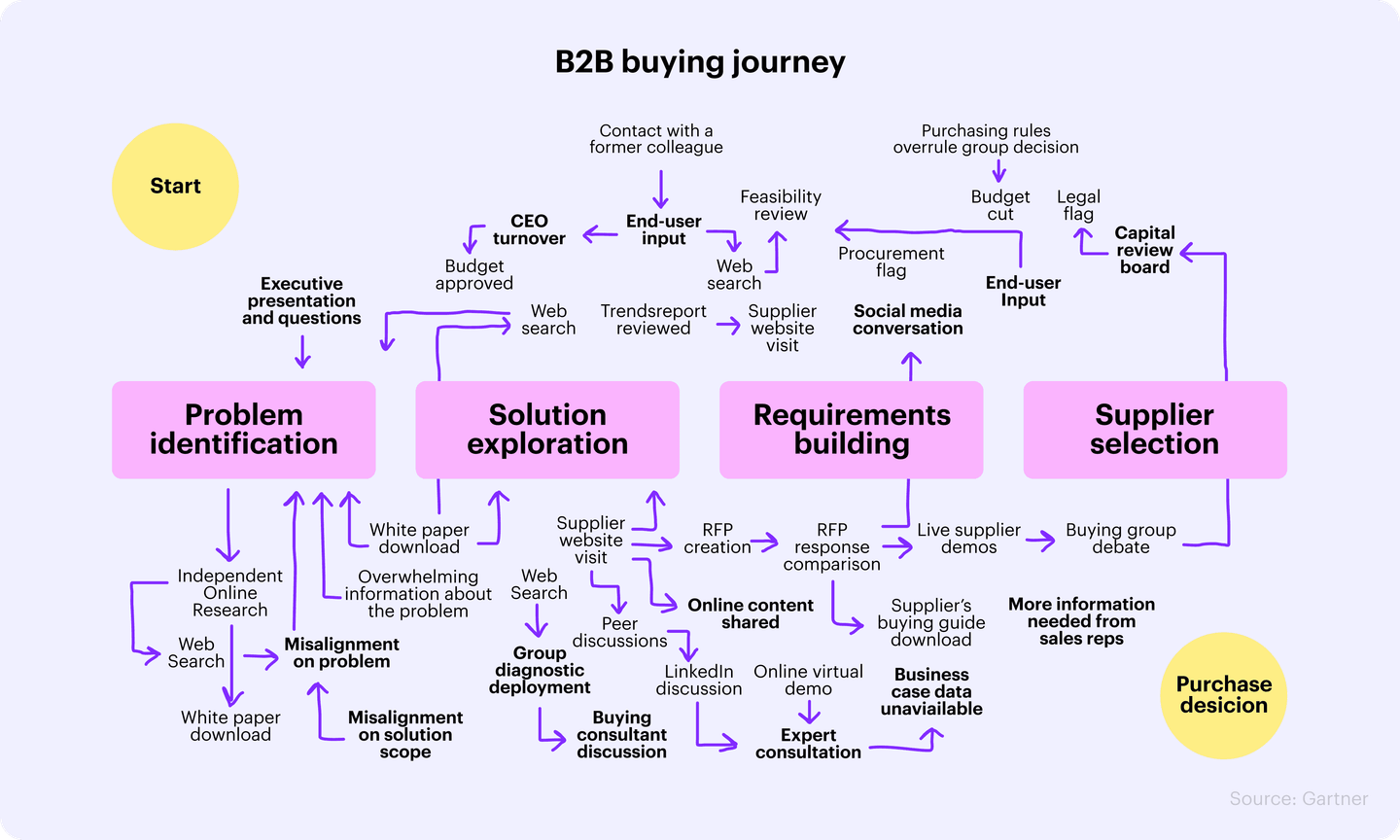
With this approach, success for both Marketing and Sales is determined by how effectively prospects move from the beginning to the end of the process.
Pipeline and revenue become the most important measures of success so both teams work towards eliminating friction throughout the buying journey.
If pipeline is down, the finger doesn’t get pointed at Marketing because there are fewer opportunities, or at Sales because win rates are down. You can diagnose the source of issues in the buying journey and address them with marketing and sales.
For instance, if deals are being lost early on in the process, you can look into how to better represent the value your product offers for different buying group members through new content, better sales decks, or more refined outreach emails.
This doesn’t mean you need to stop measuring sales-specific metrics.
Quota attainment, booked meetings, and other metrics are great ways to track efficiency and individual performance.
However, the ultimate gauge of success for your revenue team should be your ability to generate pipeline and revenue.
Create fully integrated programs
Moving down from the strategic to the tactical level, begin integrating the various pipeline strategies that sales and marketing run into a single cohesive and collaborative GTM motion.
Salesloft research into the impact of an omnichannel approach shows a pretty clear trend: more channels mean more conversions.
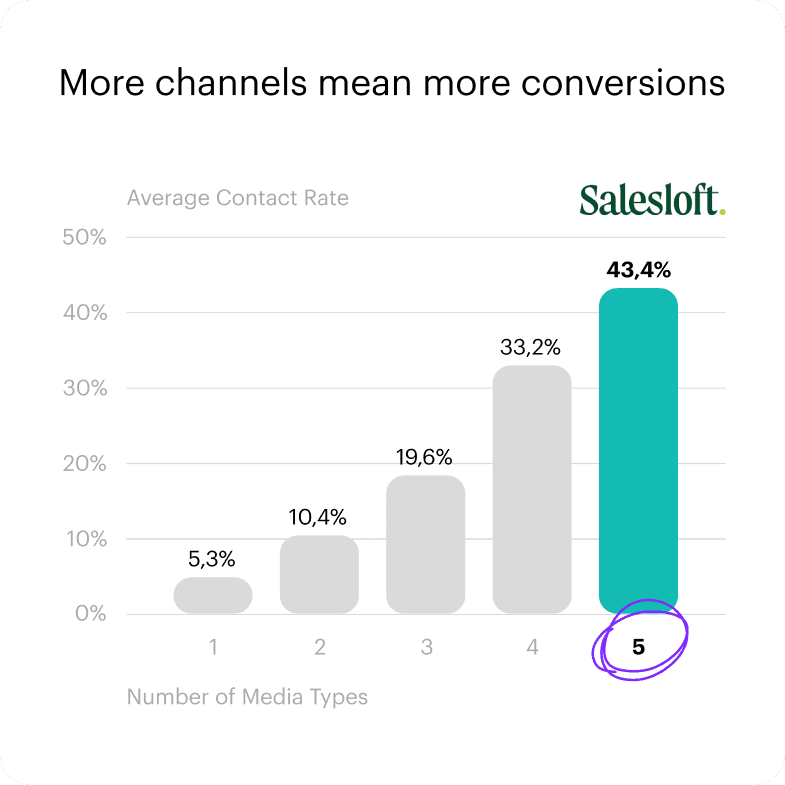
The big win, however, comes from integrating these various channels into what Joe McNeill, CRO at Influ2, describes as allbound.
Allbound is about winning pipeline by integrating the various revenue strategies—e.g., inbound, outbound, PLG—into a single holistic pipeline motion.
As Salesloft explains, “Modern buyers are channel agnostic. They’ll contact you or engage with you however they feel like it.”
Taking an allbound approach embraces the way B2B buyers make purchasing decisions by pushing consistent messaging to your prospects everywhere and providing a unified buying experience.
And it’s not just theory, we’ve done the research.
We analyzed 42,000 prospects across the databases of 20 software companies.
Specifically, we compared the conversion rates of three groups of prospects:
- Cold: Prospects with no or insignificant (less than 15 impressions) ad influence
- Influenced: At least one prospect among all outreached people was influenced by advertising (had 15+ impressions)
- Engaged: At least one prospect among all outreached people engaged with ads (e.g., liked, clicked, visited a landing page, etc.)
Here were the results.
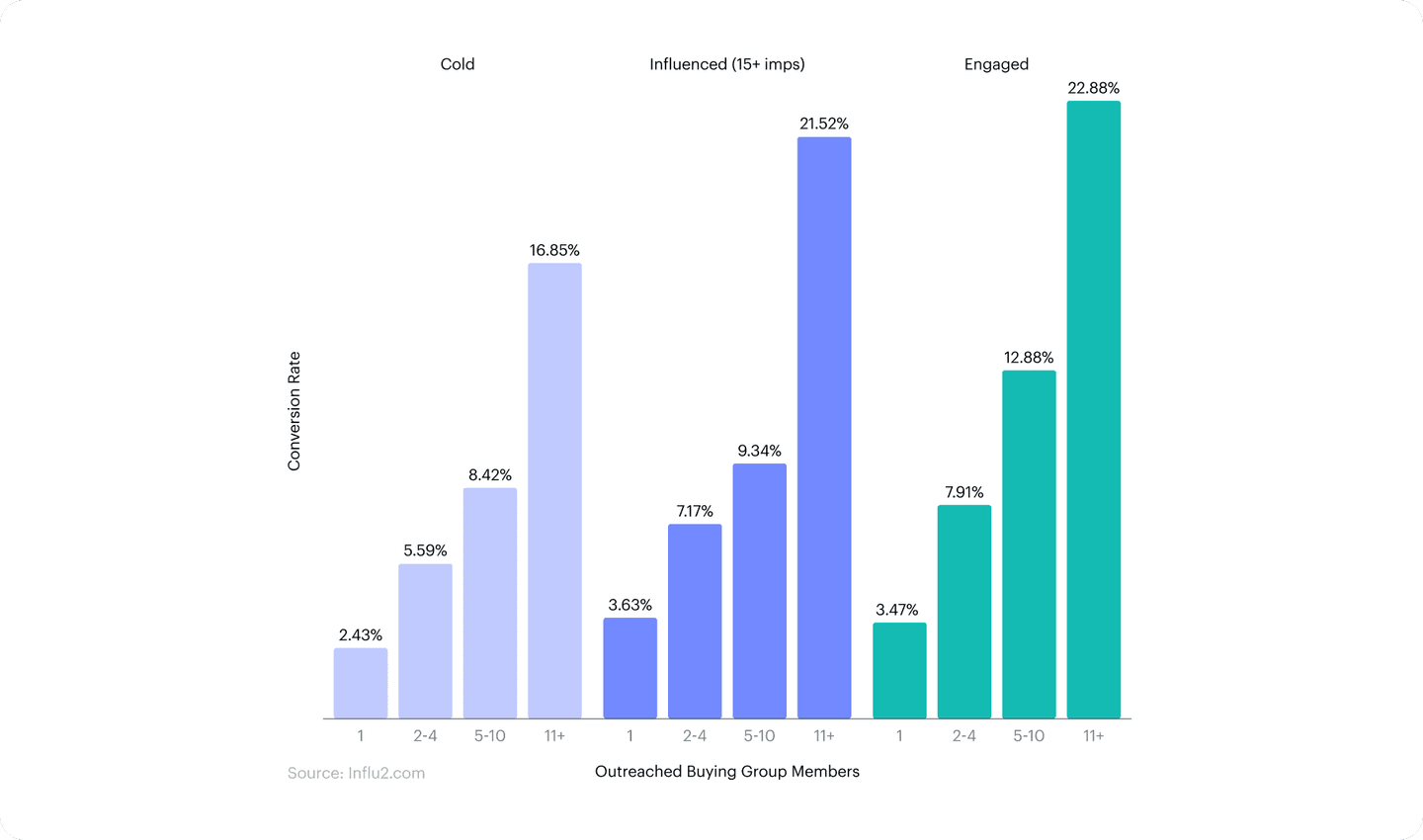
Prospects who’ve seen ads at least 15 times or engaged with them have a higher conversion rate across all buying group sizes.
Marketing can also use ads to create buying intent signals.
That is, they learn what a given prospect is interested in by how they engage with different ad creatives.
If Marketing shows a prospect multiple ads and they click on one of them, it’s a signal that the messaging or value proposition from that ad resonated.
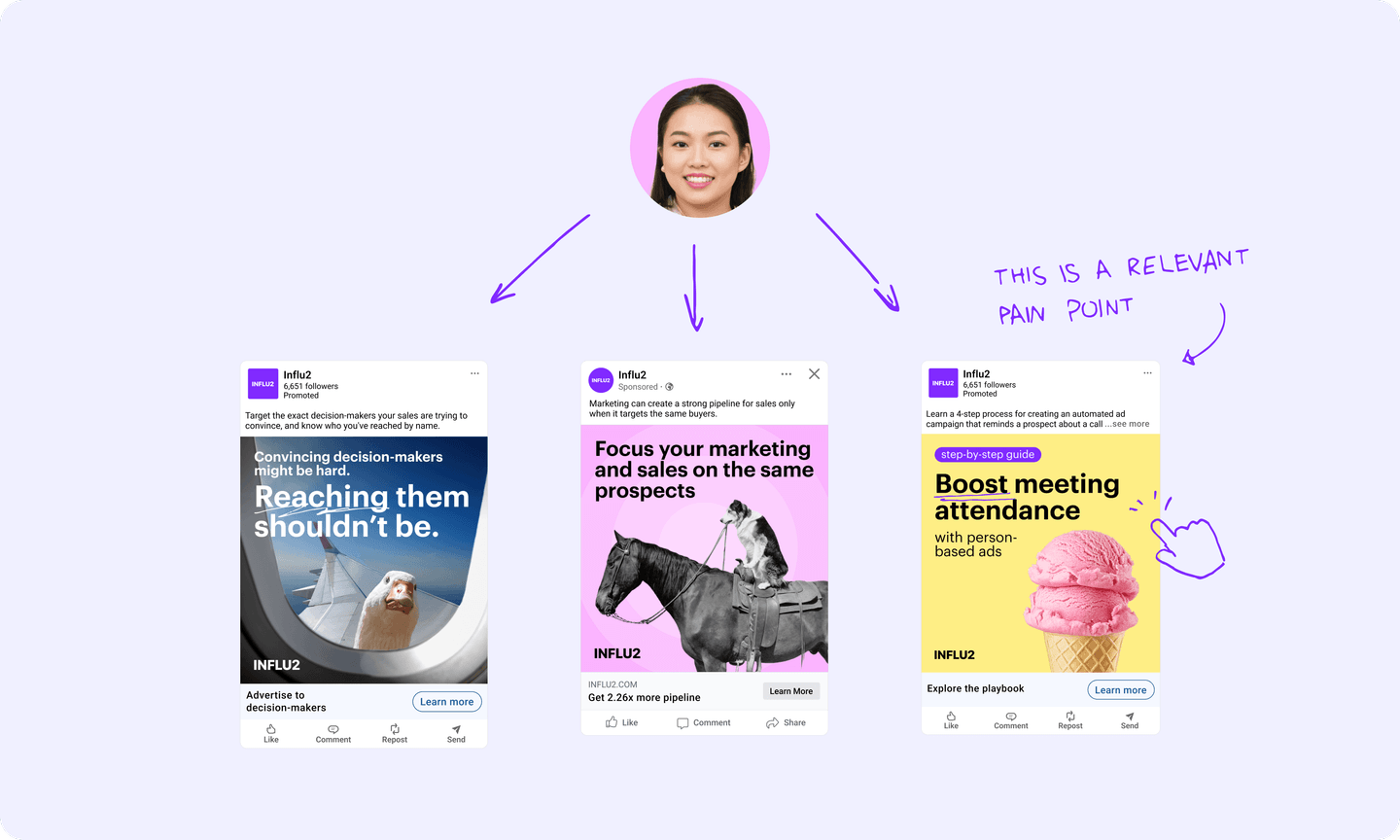
Marketing then feeds those intent signals to sales, who use them for more effective prospecting.
For example, a rep can use intent signals to tailor their messaging, decide what content resources to share, and prioritize outreach to target higher-intent leads first.
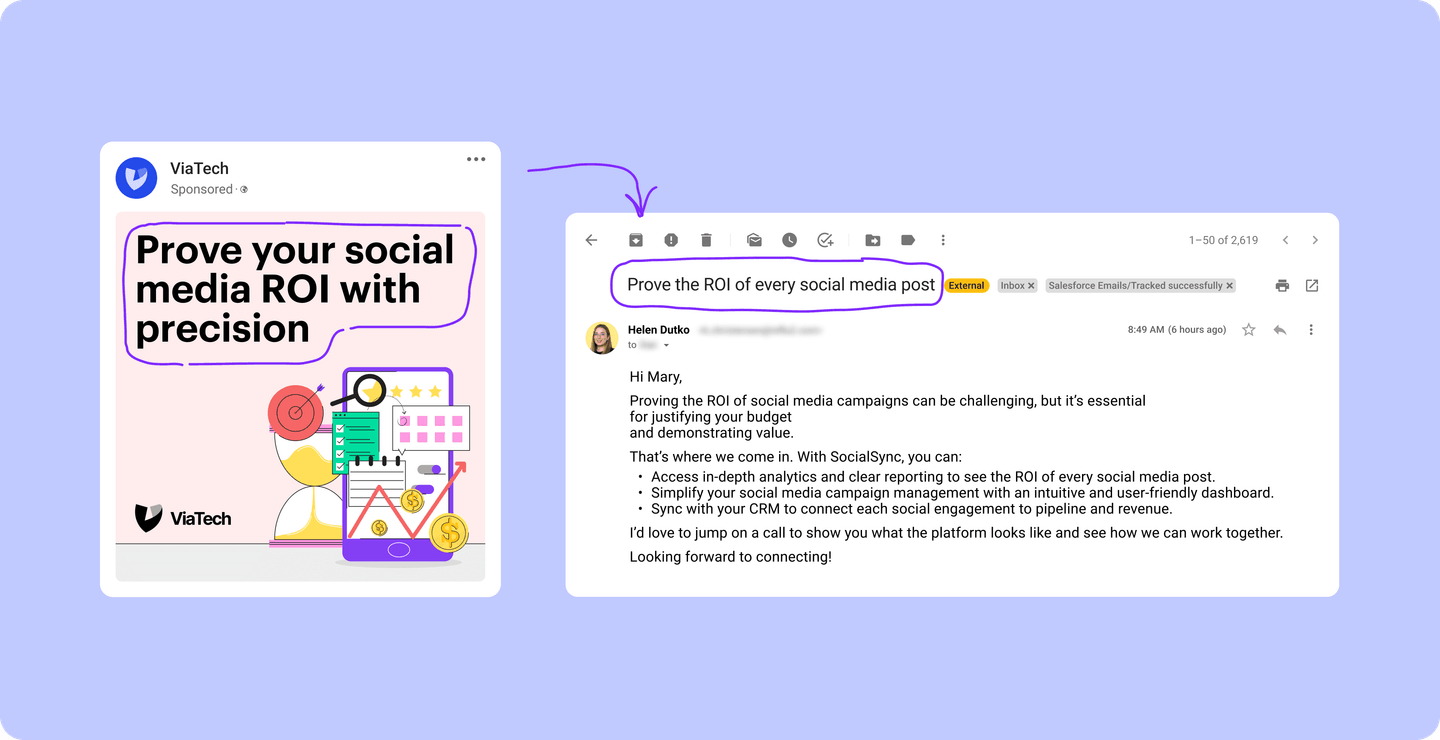
This approach is particularly relevant in B2B sales because you’re selling to an entire buying committee, not just a single prospect.
Each decision maker or influencer will move through the buying journey at their own speed, and you likely won’t be able to reach them all through a single channel.
Say you’re selling fraud management software to a national bank chain.
One of the buying group members may be the head of the fraud prevention department. But to close the deal, the company’s IT and legal team will also need to vet and sign off on your product.
While you’re having conversations with the head of fraud prevention to help them understand the value you can offer, you may also want to grow general product awareness with the Legal and IT departments.
If you’re not at the stage where a call makes sense, you can use Marketing to start multithreading.
Marketing can target decision-makers in the legal and IT departments with content explaining the security features of your product.
When the deal progresses, and it’s time to speak directly with Legal and IT, your sales team doesn’t need to start from scratch.
Plus, if the head of fraud prevention is considering your product, they may have already started internal conversations with legal and IT, so working with Marketing to target them can make championing your product easier.
Create feedback loops with marketing
Keeping an open line of communication between sales and marketing is a practical way to begin tearing down department siloes and misaligned goals.
Regularly scheduled check-ins (e.g. weekly or monthly) are a valid way to formalize reporting, but you should take this a step further to encourage ongoing collaboration.
Slack is another great channel for these conversations. Marketing and Sales can have a channel to discuss what’s working in terms of messaging or activity flows, which is an easy way to create engagement.
A buddy system is another effective option.
If a sales rep is working with one specific marketing person on a given account or buying group, they can provide timely intel on the results of sales conversations that the marketer can use to fuel ad campaigns.
Okay, so you’ve figured out how to align more effectively with marketing. What best practices can you look at next to build a more successful prospecting strategy?
6 Best practices for building a successful prospecting strategy
Ready to dig into sales prospecting? Here are six best practices to prioritize.
1. Focus on people, not just accounts
Account-level intent tells you which companies might be in-market. That’s helpful, but contact-level intent data can help you dive even deeper.
It tells you which specific prospect within an account is interested in which aspects of your product based on browsing activity on your site, engagement with marketing touchpoints like ads, and behavior on third-party sites too.
Here’s an example of what that looks like with Influ2.
Your marketing team shows ads to each prospect you’re targeting. When a prospect clicks on that ad, Influ2 provides a report with all the details you need to send a highly relevant message (who clicked which ad and when). This data gets fed directly into Salesforce, but you can also set up notifications via Slack and email.
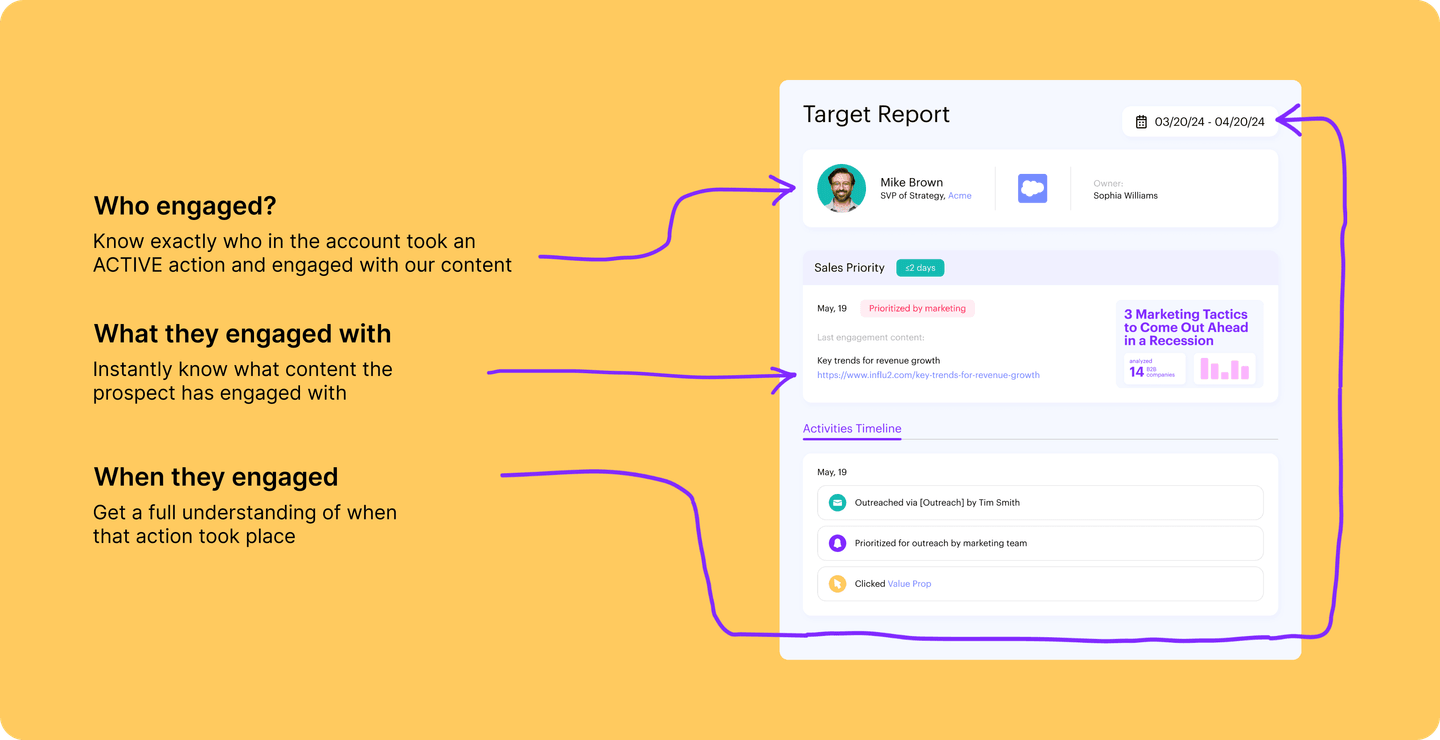
Use these insights to:
- Tailor your outreach email messaging to each stakeholder in the buying group
- Prioritize outreach to tackle high-intent prospects first
- Identify appropriate content assets to share to aid conversion
For more tips on how to maximize contact level intent signals, check out this guide.
Here’s an example of how one of our customers, CipherHealth, implemented this framework in their program.
First, CipherHealth’s sales and marketing teams agreed on an ICP and defined their buying journey.
The marketing team then built ad journeys that mapped to each opportunity stage in Salesforce and began launching ads targeting specific executive champions at target accounts.
They then used automation to notify sales reps when a prospect engages with ads in real-time.
Also, when a contact engages with Marketing’s ads, they’re enrolled into a Salesloft cadence based on their intent and engagement.
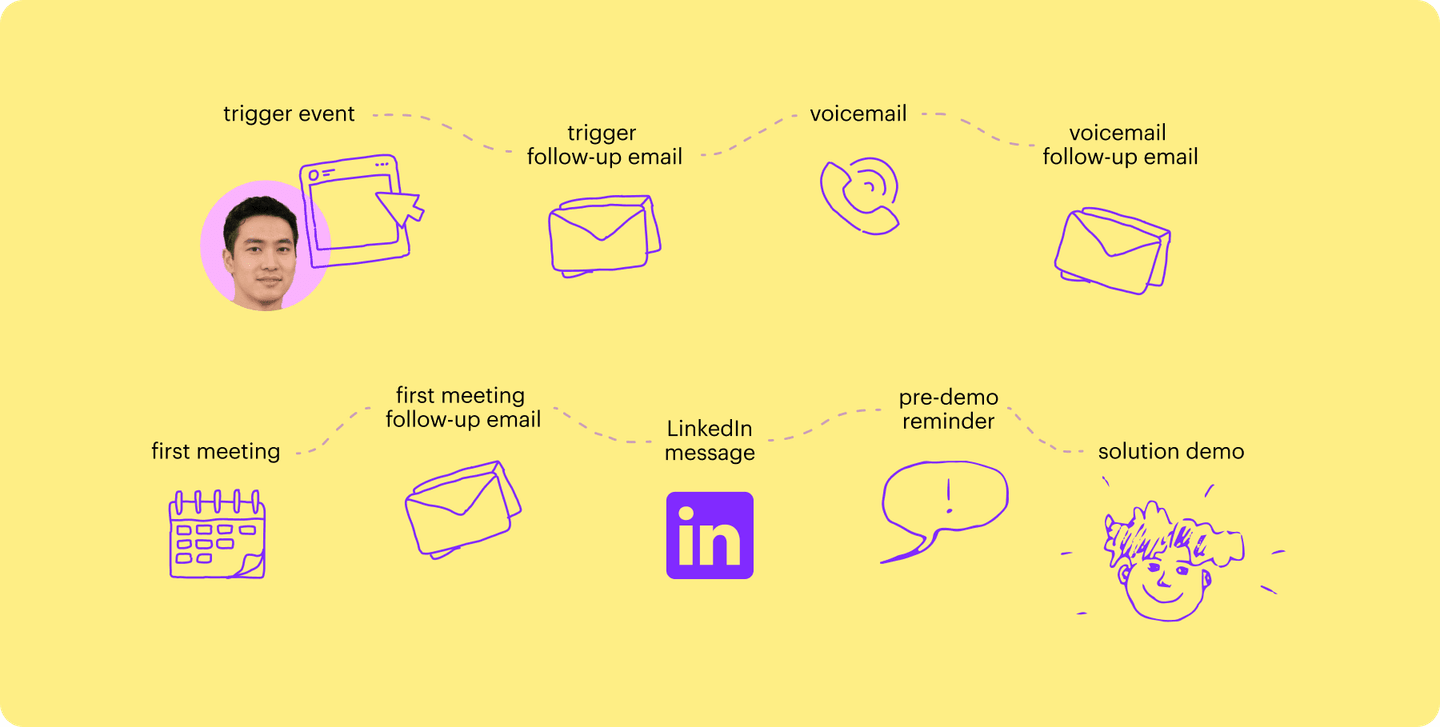
Check out their full case study here to see more details about what they did and the results they achieved!
2. Use multi-touch, multi-channel cadences
Buyers today don’t live in a single channel.
They’re checking their inbox, scrolling LinkedIn, answering calls, and engaging in Slack communities throughout the day. If you’re only reaching out through one channel, you’re missing opportunities to get in front of them where they’re already active.
An integrated multi-channel strategy might involve a mix of email, calls, social touchpoints, and LinkedIn InMail. But the key is orchestration, not random outreach across multiple channels.
Here’s an example of how you might combine multiple touchpoints into an organized workflow:
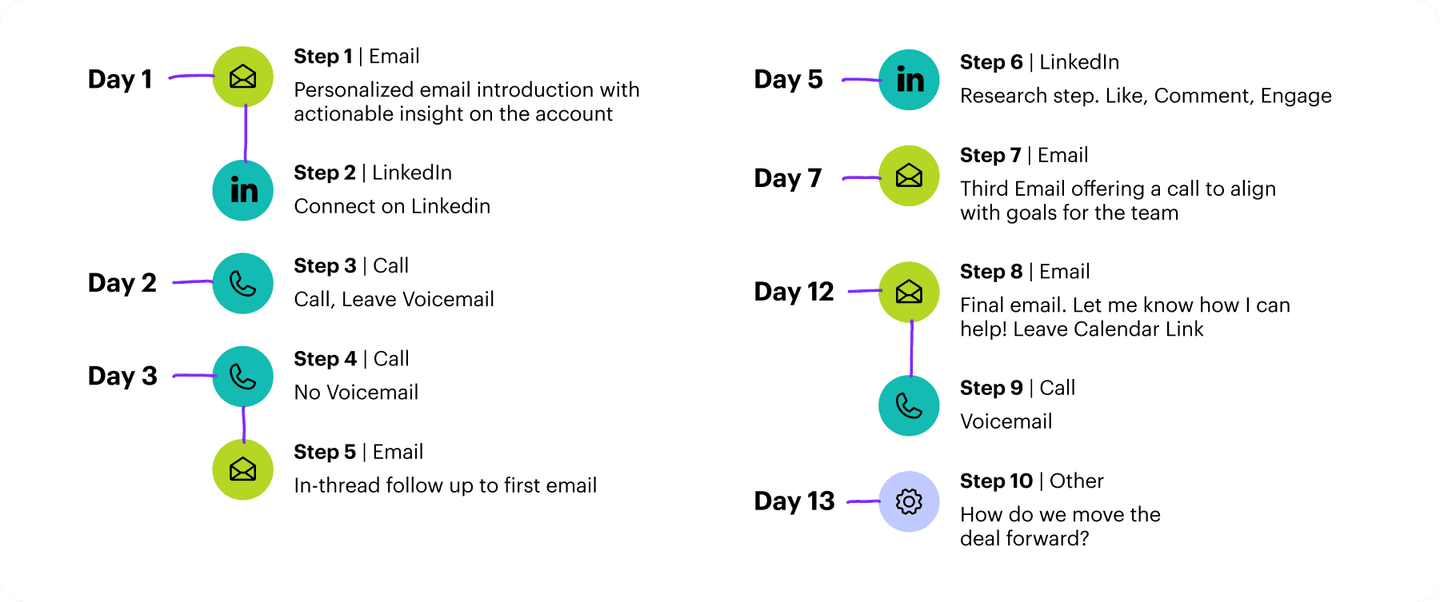
Here’s why it works:
- Consistency without over-saturation: Reaching out across multiple channels doesn’t mean bombarding prospects. It means strategically sequencing touchpoints based on engagement signals. For example, if a prospect opens your email but doesn’t reply, follow up with a LinkedIn connection request before making a call.
- You meet prospects on their terms: Some people ignore any call from a number they don’t recognize, but accept every LinkedIn invite they’re sent. Others ignore cold emails but save every voicemail they get. A multi-channel strategy allows you to test and optimize for what works best for each prospect.
- Increased brand familiarity: Seeing your name across different channels creates familiarity and trust. Even if a prospect doesn’t reply to the first few touchpoints, repeated exposure makes it more likely they’ll engage when the timing is right.
A multi-touch approach isn’t just limited to the sales team.
Integrating Influ2 ads brings a traditionally marketing-owned channel (ads) into the sales workflow to amplify your outreach and increase engagement.
While the sales team is reaching out with calls, emails, messages, and other channels, marketing can target the same prospects with ads across multiple channels (Facebook, Instagram, LinkedIn, and ad networks), creating even more layers to your outreach.
One strategy we use at Influ2 is running ads featuring the SDR who is actively reaching out to their prospects.
It personalizes the experience and creates a sense of familiarity. When prospects see emails or messages from SDR, they recognize the name and have more context.
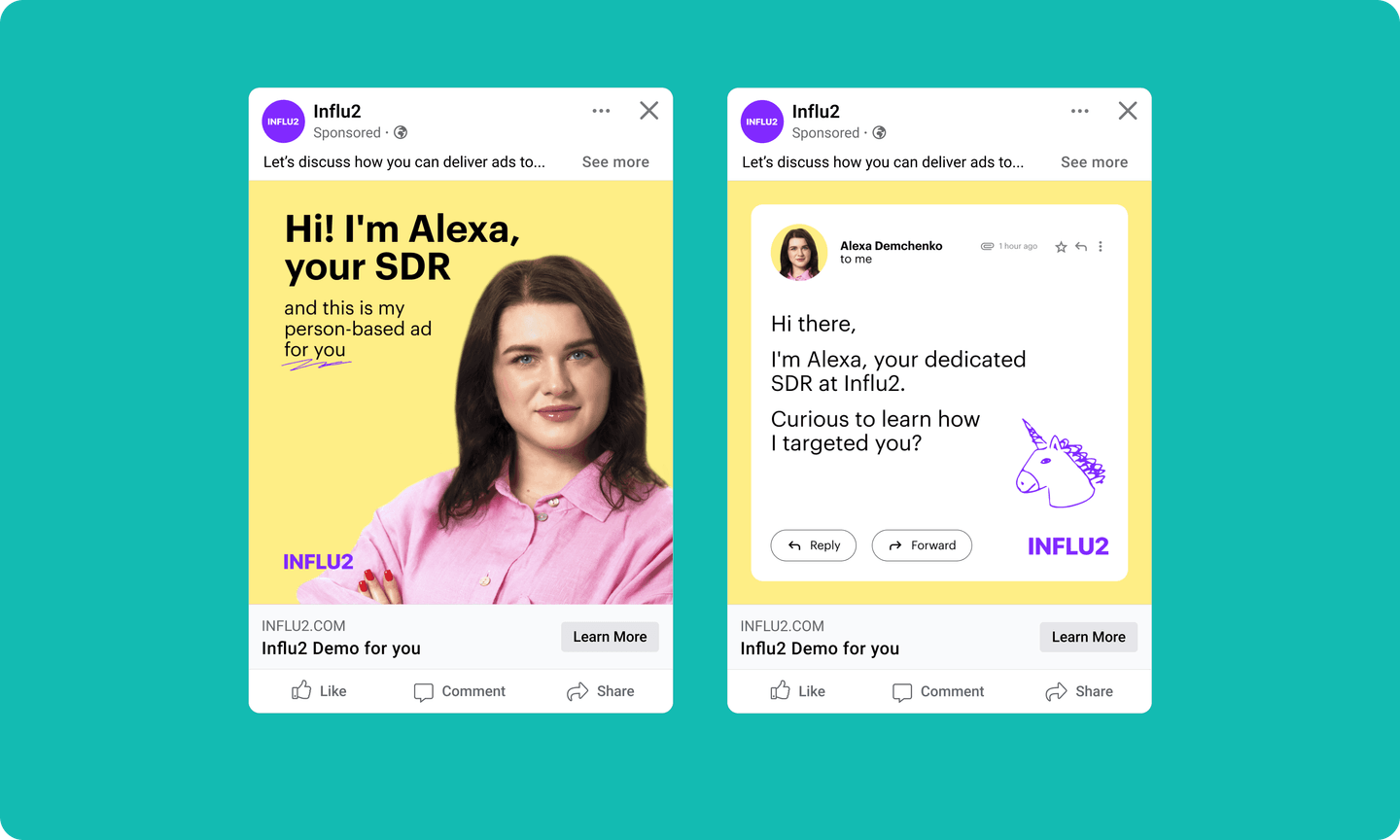
As prospects engage with your sales and marketing efforts, they leave behind breadcrumbs—small pieces of interaction that provide invaluable context.
Each email opened, call answered, or ad clicked gives you insights into their interests and needs.
These breadcrumbs not only help you tailor your messaging but also create a narrative that guides prospects through their buyer’s journey.
The more channels you utilize, the more breadcrumbs you collect, leading to a clearer path for conversion.
It’s also important to have a system to track all of these activities. Oftentimes marketing and sales engagement are tracked in siloes because the data lives in separate systems.
Bringing this data under one roof is a game changer for creating a truly unified outbound strategy.
3. Humanize how you approach different stakeholders
As mentioned earlier, most B2B deals involve multiple stakeholders and decision-makers. Being aware that you’re not just selling to a single person is step one.
Where you’ll really win, though, is when you recognize that each of those stakeholders, especially those in different roles, care about different things.
The Marketing Director might be interested in how your tool can transform and streamline their team’s workflows. The CMO may care more about how this translates to hitting their quarterly targets.
To help uncover this data, Salesloft recommends researching each prospect to see where you can provide the most value. They suggest looking through LinkedIn to see if a prospect is posting about pain points you can solve or working with marketing to see if they’ve engaged with any content on your website.
The point is this:
You need to take a contact-level approach and tailor your outreach messaging to each stakeholder’s needs. And there needs to be two-way communication between Sales and Marketing to figure out what this looks like.
For example, the sales rep on a given account can give the marketing team a heads up on what they identified each stakeholder sees as most important so they can trigger relevant contact-level ads.
At the same time, Marketing can feed Sales information about how each prospect is engaging with certain touch points (James clicked this specific ad yesterday) so the rep can tailor their next call accordingly.
Traditionally, this feedback loop is a manual process. But with technology like Influ2 and Salesloft’s Rhythm, you can do it at scale by automatically sending intent signals to the sales team and even integrating it into your CRM so reps can see everything in one place.
4. Build trust and authority before reaching out
According to Salesloft, “Prospecting isn’t just about selling—it’s about establishing yourself as a trusted authority on your particular solutions.”
Prospects want to know the salesperson they’re speaking to is knowledgeable about their industry and understands what they’re going through.
Building a personal brand is a great way to showcase that.
Salesloft recommends using LinkedIn or other platforms to share helpful content that resonates with your prospects (a.k.a social selling).
If the idea of posting on social media doesn’t come naturally to you, here are six tips Salesloft recommends.
These tips are specifically for LinkedIn since it’s more relevant for B2B sellers, but the same principles can be applied to other platforms as well:
- Start thinking of yourself as a content creator: Top content creators add value for their audience, have a distinct voice, use multiple content types, and post regularly. You should too.
- Stop lurking and start engaging: Commenting and engaging with other people is just as important as posting your own content. Be just as active in other people’s feeds as you are on your own.
- Give prospects a reason to connect on LinkedIn: To make sure your prospects see your content, you want them to connect with or follow you. Salesloft suggests sending personalized connection requests and engaging with their content to catch their attention.
- Don’t pitch new connections immediately: Once someone accepts your connection request or follows you, it’s tempting to dive into a pitch—don’t. Salesloft recommends having your LinkedIn messages run alongside the prospecting process rather than being the avenue you pitch through. For instance, you might send a DM to ask if they got a video you emailed them a few days prior.
- Don’t try to book meetings directly through your posts: Skip the “if you liked this, book a demo” message at the end of your LinkedIn posts. Salesloft says the tactic isn’t very effective and can turn prospects off.
- Done is better than perfect: Don’t overthink your content. Not every post will perform well, which is fine. Focus on being consistent and make improvements over time.
Always remember that people buy from people. That’s more applicable today than ever before.
Social selling isn’t seen as going the extra mile anymore. According to Salesloft, it’s a foundational piece of the prospecting process.
5. Avoid these prospecting email mistakes
You’ve done a ton of work to find the right prospect, and you know they’re a good fit for your product. Now it’s time to reach out.
But when your prospects’ inboxes are inundated with sales messages, how can you avoid getting lost in the noise?
Salesloft has some great tips to help your prospecting emails get opened and read.
It starts with the subject line. Here’s what’s on their list of what to avoid:
- Creating a false sense of urgency (avoid buzzwords like limited, final, and deadline)
- WRITING IN ALL CAPS
- Punctuation
- Emojis
As for what works, they found that one-word subject lines have an 87% higher reply rate.
And, of course, personalization can make a significant impact as well.
When it comes to the body of your emails, Salesloft has some recommendations:
- Provide value early: Offer your best content, information, or tip in your very first email, and clearly explain your value proposition.
- Avoid sounding robotic: Your emails should sound like they’re coming from a human and are meant specifically for the recipient. If you can copy the entire body of your email and send it to someone else, it’s probably too generic.
- Mix in social proof: Every company says they’re the fastest, most efficient, and best at what they do. Salesloft recommends standing out by using case studies to back any claims you make. But avoid padding your emails with stats and figures or prospects might lose interest.
Taking a systematic approach to prospecting emails is a good way to make sure you’re avoiding red flags and capitalizing on best practices.
Take a look at Salesloft’s email templates to build a foundation of emails you can re-use and repurpose for different situations.
6. Keep track of what worked (and what didn't)
One of our favorite tips from Salesloft is to monitor your wins and losses so you can refine your prospecting strategies and improve your results.
They recommend doing this with each sales touch. Track which emails perform best, which call scripts are most effective, which LinkedIn messages resonate, and any other data point you can collect.
Using that data, you’ll be able to answer questions like:
- Which emails had the highest and lowest reply rate?
- How many days, on average, should you wait to follow up?
- How many leads do you need to bring into the sales funnel to meet quota?
Continuously refine your strategy, measure results, and iterate on your process.
Orchestrating your outbound sales strategy
For many companies today, an outbound sales motion in isolation will not be enough to grow pipeline and drive revenue.
The most effective revenue teams today take an integrated approach to their outbound sales strategy, aligning sales and marketing and orchestrating inbound and outbound touchpoints across all available channels.
Salesloft’s AI-powered revenue orchestration platform gives more than 5,000 teams a competitive advantage with powerful buying intent signals and customizable sales outreach cadences.
Use Influ2 for contact-level ABM and get intent signals from key buyers in your target accounts and launch more targeted ads.
You can also integrate Influ2 and Salesloft to get the best of both worlds. If you’re interested in learning more, let’s talk.





